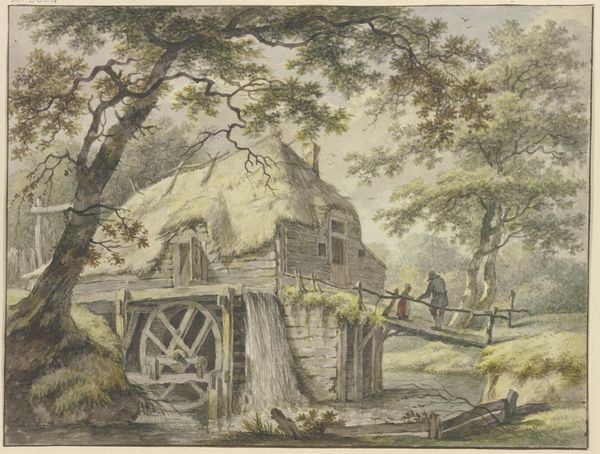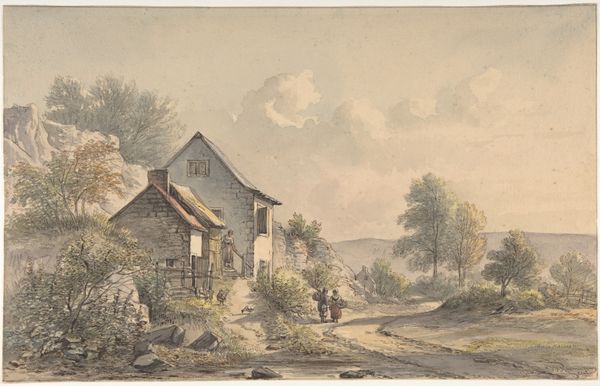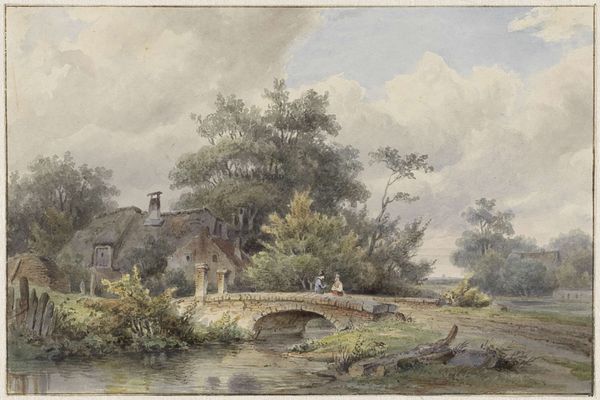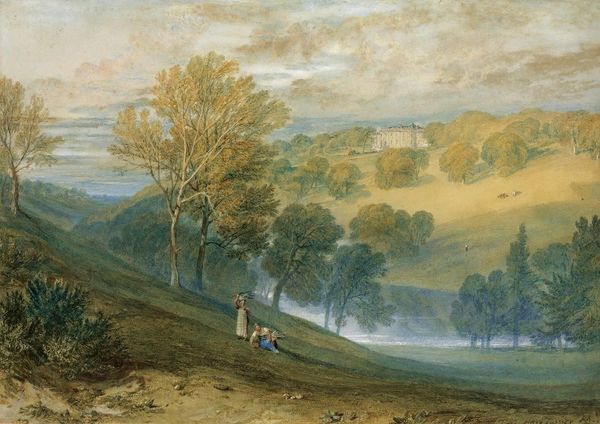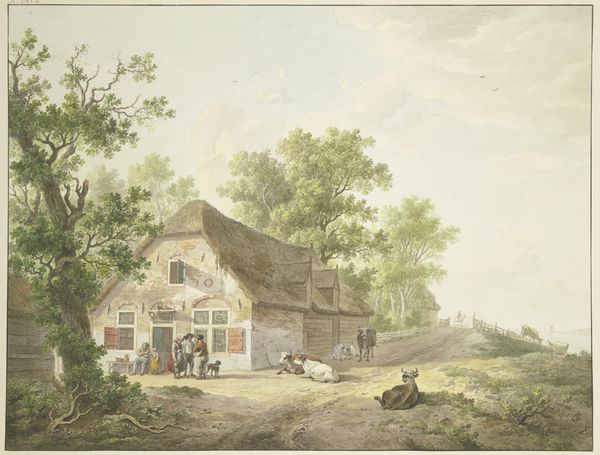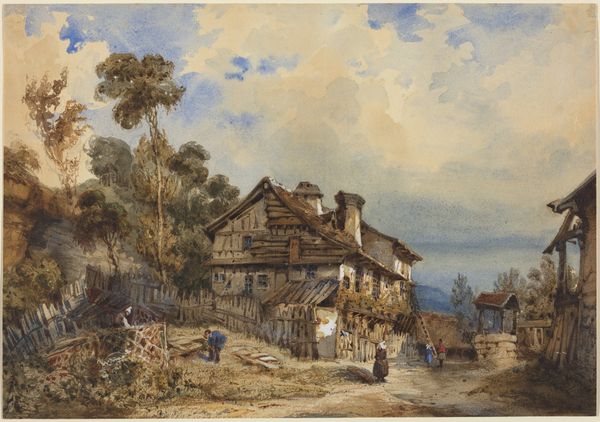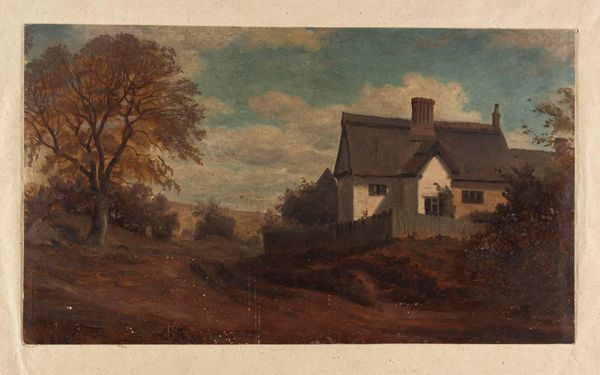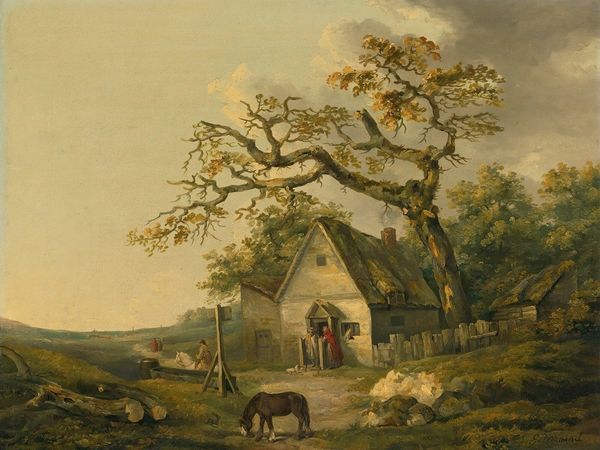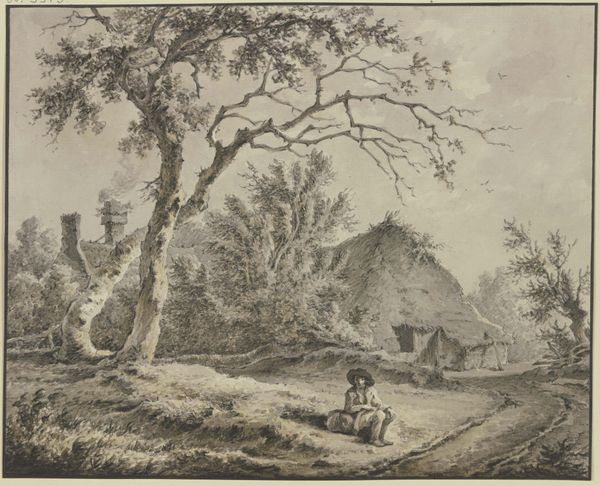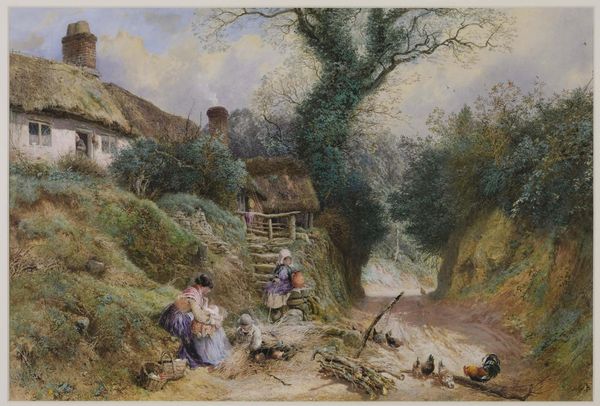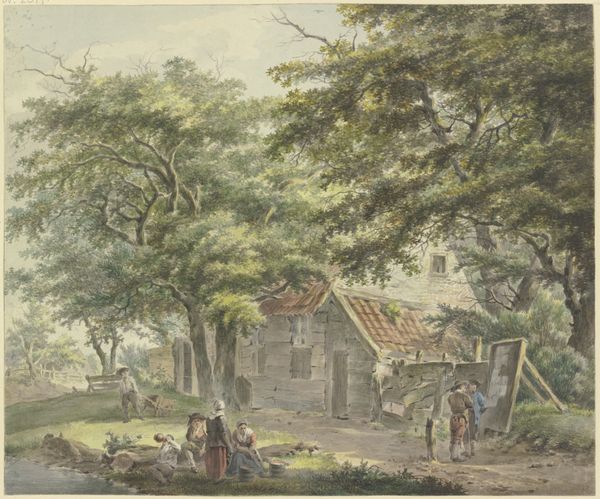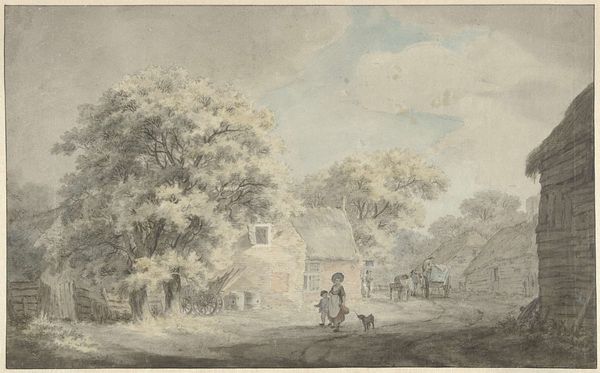
watercolor
landscape
oil painting
watercolor
romanticism
watercolor
Copyright: Public Domain: Artvee
Curator: This delicate watercolor is "Overshot Mill, North Wales," painted by David Cox. What do you think? Editor: It has a quiet melancholy. The muted tones and almost grey sky make the mill seem very isolated, a feeling that there’s little activity or movement. Curator: Indeed, and that feeling is key when contextualizing Cox’s work. Consider the social and economic shifts of the time. Rural industries like this mill were beginning to face increasing pressures. The women walking up the road add a human dimension but don't disrupt the somber mood. What is their relationship with the mill, if any? Editor: Good point. Focusing on materiality, watercolor lends itself well to capturing the textures of stone and the movement of water, both central to the mill's operation and function. Look how he builds up the layers to create a sense of depth. The means of production, water turning the wheel, become the subject itself, overshadowing any romantic ideals of labor. Curator: Right. By turning his gaze towards the everyday landscapes, Cox implicates his Romantic vision with the social realities and power dynamics of industrial development. These structures literally embody historical power relations. Who owned this mill? How did its function impact the local community, particularly women? Editor: And don't forget the sheer physical labor involved in constructing and maintaining such a structure. The rocks used, the way the water is channelled – all testament to human manipulation of the environment. How did the exploitation of the natural landscape tie into the larger social and political environment for these rural people? Curator: Absolutely. And these types of historical structures that harnessed natural resources, like mills, raise pressing questions of gendered labor that continue today around the uneven impacts of extractive and manufacturing industries on marginalized communities and their landscapes. Editor: Looking again, the visible brushstrokes reveal his process – his active construction of the scene, transforming raw materials into art but, maybe more importantly, highlighting material conditions to invite conversations of sustainability and how society places economic value in these hard rural spaces. Curator: I agree; viewing the painting through this lens challenges us to acknowledge our present concerns reflected in the past. Editor: Definitely something to ponder when considering our contemporary moment, in dialogue with past methods of crafting and building within community.
Comments
No comments
Be the first to comment and join the conversation on the ultimate creative platform.
